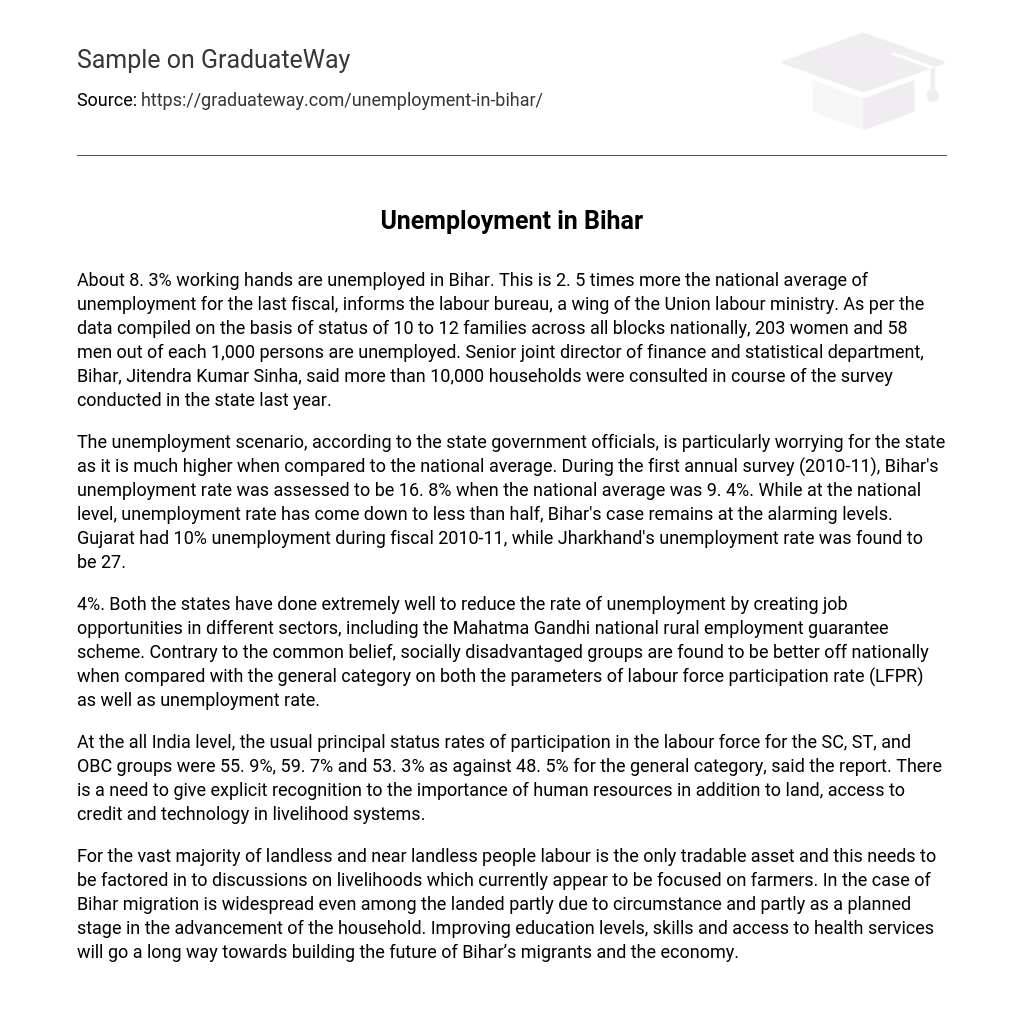About 8. 3% working hands are unemployed in Bihar. This is 2. 5 times more the national average of unemployment for the last fiscal, informs the labour bureau, a wing of the Union labour ministry. As per the data compiled on the basis of status of 10 to 12 families across all blocks nationally, 203 women and 58 men out of each 1,000 persons are unemployed. Senior joint director of finance and statistical department, Bihar, Jitendra Kumar Sinha, said more than 10,000 households were consulted in course of the survey conducted in the state last year.
The unemployment scenario, according to the state government officials, is particularly worrying for the state as it is much higher when compared to the national average. During the first annual survey (2010-11), Bihar’s unemployment rate was assessed to be 16. 8% when the national average was 9. 4%. While at the national level, unemployment rate has come down to less than half, Bihar’s case remains at the alarming levels. Gujarat had 10% unemployment during fiscal 2010-11, while Jharkhand’s unemployment rate was found to be 27.
4%. Both the states have done extremely well to reduce the rate of unemployment by creating job opportunities in different sectors, including the Mahatma Gandhi national rural employment guarantee scheme. Contrary to the common belief, socially disadvantaged groups are found to be better off nationally when compared with the general category on both the parameters of labour force participation rate (LFPR) as well as unemployment rate.
At the all India level, the usual principal status rates of participation in the labour force for the SC, ST, and OBC groups were 55. 9%, 59. 7% and 53. 3% as against 48. 5% for the general category, said the report. There is a need to give explicit recognition to the importance of human resources in addition to land, access to credit and technology in livelihood systems.
For the vast majority of landless and near landless people labour is the only tradable asset and this needs to be factored in to discussions on livelihoods which currently appear to be focused on farmers. In the case of Bihar migration is widespread even among the landed partly due to circumstance and partly as a planned stage in the advancement of the household. Improving education levels, skills and access to health services will go a long way towards building the future of Bihar’s migrants and the economy.





